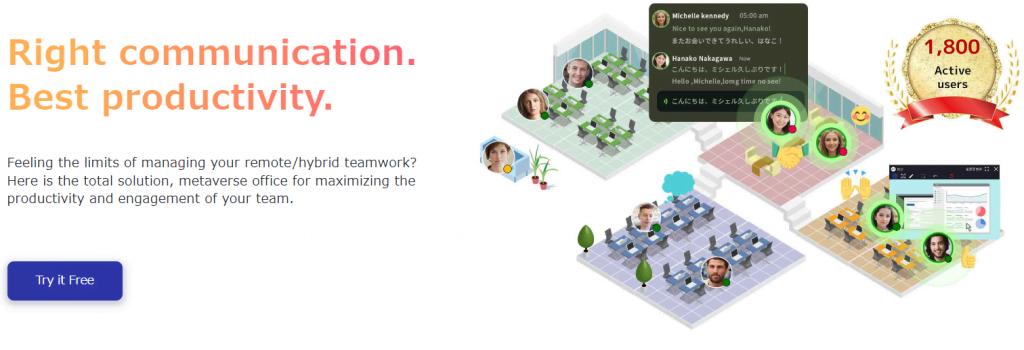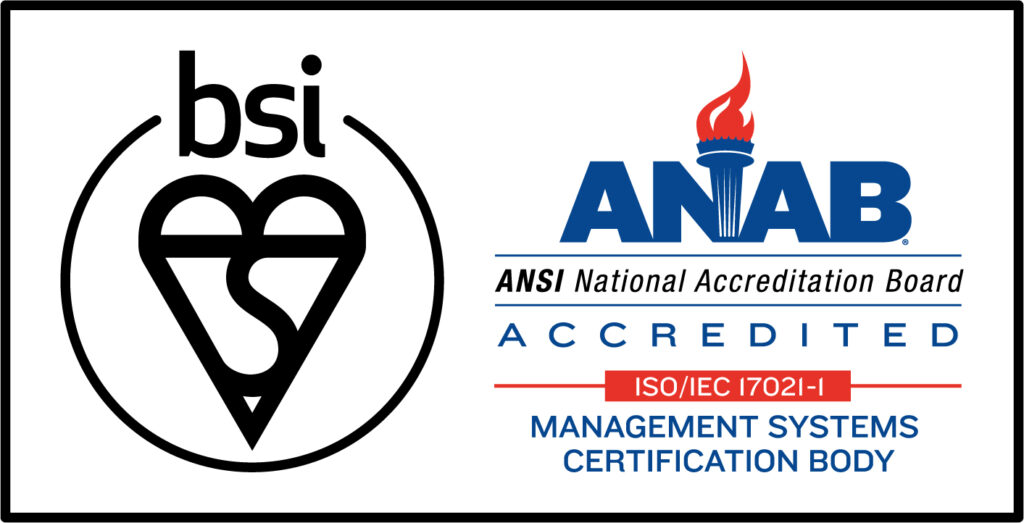There are so many different roles in project management that it’s easy to get confused about them: project manager, project lead, team leader… the titles are so many that it can become hard to understand precisely what are the responsibilities and required skills of a precise role.
In this article, we’d like to help bring some clarity to the matter by focusing on the project lead. This is a role that too often gets confused with the project manager’s; for this reason, we want to discuss what the project lead is and does, what are the required skills and responsibilities, and how this role is different from the one of the project manager.
We are also discussing the new challenges that the project lead needs to face during these times when more and more project management processes are migrating online and remotely. At the end of the article, we’re also providing you with an important tip on how to make your life as a project lead easier by using the proper software tool.
So, without further delay, let’s dig deep into everything you need to know about project leads.
The role of the project lead: what is it?

A project lead is someone who has a role of responsibility and coordination inside the project team, but they always report to the project manager. The project lead’s responsibilities are the following:
- they communicate regularly with the team members coordinating their daily or intermediate tasks with the main goal. they are also there to provide context and support to the entire team.
- they are responsible for the team, meaning that they make sure that the team remains focused and on track. Very often, the project lead is the one who addresses conflicts and helps resolve them.
- they offer support to the team. Sometimes, the support the project lead needs to provide is emotional and motivational. They are responsible for creating a workplace atmosphere that helps bring the best out of every member of the team.
As you can see, it’s no surprise that the role of the project leads gets confused sometimes with the project manager’s. After all, the two roles often overlap.
However, it’s important to know that the two roles are not the same. Ignoring this important difference could affect the project in a negative way and lower its chances of success. As author and project management expert Jim Highsmith wrote in his book Agile Leaders, “most projects are over-managed and under-led”.
To increase the efficiency of your project management strategies within your company, it is therefore highly important that you understand the role of the project lead, understand the difference with the role of the project manager, and then assign the related responsibilities.
What is the difference between the project lead and the project manager?
One of the best ways of understanding what the project lead is and does is by addressing the difference between it and the role of the project manager.
As we’ve already listed the responsibilities of the project lead, let’s move on to listing the ones of the project manager:
- the project manager is responsible for implementing the project strategies, including prioritization and budgeting;
- the project manager assigns specific resources to each specific task. They are, therefore, responsible for staffing;
- the project manager is the one who sets deadlines and makes sure that the project remains on schedule;
- the project manager is also responsible for communication with all the stakeholders (superiors, clients, investors, and more…);
- the project manager is responsible for all the documentation related to the project.
Project Manager | Project Leader |
|---|---|
Implementing the strategies Assigning resources Making sure the progress Comminicating with the stakeholeders | Coodinating members’ tasks with the goal Supporting members Soliving conflicts |
As you can see, there are similarities between the two roles because they are both roles of responsibility and both figures are important points of reference for the entire team. However, their responsibilities are different: if you pay attention, you can notice how the project manager is focused on the technical aspects of the project – budgeting, staffing, schedule, documentation… – while the project lead is more focused on the people – coordination, motivation, resolving conflicts…
In the hierarchy of project management roles, the project manager is higher than the project lead because it is the second that reports
The importance of project leads
We’ve stated that the project lead focuses on the people and… are not project teams made of people? When Jim Highsmith writes that too often projects are over-managed and under-led, he means that too often project managers underestimate the importance of motivation and purpose within the team.
Project leads are the ones who focus on all those aspects that hold a team together and guide the project to be successful.
Without the project lead, the project manager risks being very precise in all the technical aspects of their job but ignoring that deadlines are respected by teams that work well together, know what they have to do every day, and know how the small task they are performing is related to the main goal of the project. This is why the project manager needs the project lead.
Can the project manager also be the project lead?
The project manager can also be the project lead. This makes them project managers who understand the importance of the project lead and its role and do not underestimate those types of responsibilities in their job.
However, being the project manager and the project lead at the same time can be easy for small projects, but as projects become more and more complex, it is recommended to assign a second person (or more than one person) with the role of the project lead.
It is also worth mentioning that, very often, project leads are future project managers: being a project lead doesn’t require the same expertise as the project manager. However, it’s still a role of responsibility that can prepare me for taking up even bigger responsibilities as a project manager.
Project lead and remote work: new challenges

As you can learn from this article, the job of the project lead can be challenging but it becomes even harder when the project is managed remotely. The job of the project leader is very focused on communication, relationship, and observation: how can they do their job when there is no direct and physical contact with and between team members?
As we’ve already mentioned, it is important that the project lead goes beyond the surface of things. When it comes to remote work, the project leader needs to apply the skills we’ve described just like they’d do with traditional in-person working processes. The way you apply those skills, however, may change.
For example, when you work in an office full of people you can notice that a particular team member is late with their work and they are not likely to meet their next deadline. This isn’t something that you can notice when the team member is working from home or another location. When working remotely, you need to change your mindset and find new ways to perform your task. In the example we’ve just made, you’ll need to find ways that your team members stay on track with their tasks: you could send periodic messages asking them to inform you about their work or even show you what they’ve done; you could set up milestones so that you can address very early when someone is struggling to respect the schedule and so on…
Importance of project lead in remote working
When a team is spread through different locations the role of the project lead is even more important. This is simply because each team member would be more isolated and it would be more difficult for them to stay motivated, don’t lose sight of the main goal while they’re performing smaller tasks, being coordinated between themselves and with other teams working on the same project.
The role of the project lead in the case of remote working is key to keeping the team united and helping the members stay on track. It is also important as a connection between the team and the project manager and the stakeholders.
Remote project lead: tips and strategies

In this paragraph, we are providing you with some tips, and some actions that you can put into place today, to improve as a project leader.
1- Create online resources
The process of continue asking and provide answers, when managed remotely, can become time-wasting and tiring. As a project lead, you can create online resources accessible to the entire team at any moment.
This way, the team will always feel supported while you can dedicate your time to other aspects.
2- Clear goals
Having clear goals is the mantra of all project managers and leaders, but when you work remotely it all becomes even more important. It’s very easy when any member is working from a different location, to lose sight of the main goal or get confused about it.
Make clear goals and clear milestones and share them in the most efficient way: you could communicate them during a virtual meeting and create an online resource so that they are always available for the team.
3- Invest in the right tools
The right software tools can help you put into practice the tips just described very easily. For example, sharing resources online, and creating dashboards and schedules… it is all a lot easier when you can count on a software tool specifically designed to provide you with these features. As we’re discussing at the end of this article, Voice Ping 2.0 is the most recommended.
4- Video-call coffee breaks
Knowing your team is important but when you set up a team remotely it becomes harder. You need to find ways to get to know the people you are working with. One of these ways could be video-call coffee breaks during which the team members can meet virtually in a video call and talk and simply get to know each other. And you’ll get to know them.
5- One to one meetings
One-to-one remote communication is usually handled via instant chats, however, sometimes a video call is more effective. Choose video calls over instant chats when you want to make sure the message is provided clearly, when you want to provide motivation, or when you need to understand issues that may depend on emotions or mental states.
Things to avoid when leading a project remotely

1- Control
When the team is working remotely you can physically check that anyone is doing their job. Don’t try to control your team with other methods (for example, don’t ask them to leave their camera on!). Control creates stress and an uncomfortable environment.
Instead, enhance autonomy and trust. Any team members should feel responsible for the work they need to do. This happens when they feel part of the project, when they are involved in the decision-making, and when they are rewarded for their efforts.
2- One-way communication
When you don’t have your team members in front of you it becomes easy to fall into a one-way communication: one where you communicate what needs to be done and how and team members have no chance to reply.
You should avoid this: you should always remain open to suggestions and feedback from your team members.
This can depend a lot on the software you are using: use communication tools that allows two-way communication between your team and you.
3- Forget to celebrate success
It’s easy to celebrate a good job when we are all working in the same office. But when you are working remotely it becomes very easy to underestimate this aspect and forget about it. Celebration and rewards are, instead, important to maintain the team’s motivation high.
You can celebrate success during video-call coffee breaks (that we’ve mentioned above) or be creative and find other ways.
Remote project lead: essential skills
There are some skills that are essential to any project lead, whether they are working inside an office with their team members or remotely behind a computer. In this paragraph, we have summed up the most important ones.
1- Conflict resolution

Sometimes, conflict is responsible for project failure: when the team doesn’t work well together, productivity is affected, deadlines are not respected, quality is affected, and so on…
Often, conflict isn’t something that the project manager can address, and even less resolve. A good project lead is, instead, capable of preventing, addressing, and – when needed – resolving conflicts.
Conflict is not always an argument between team members and different teams. Sometimes, conflict can be born because two teams work independently and they got out of sync with each other.
The project lead always needs to step in in this case and coordinate the two teams accordingly to the project requirements.
2- Servant leadership
Project leads need to be servant leaders meaning that they need to put themselves at the service of individuals. Project leads need to be less focused on the company’s interests, and more on the needs of the individuals that work for it.
What makes a good servant leader? Listening. A project lead needs to gather feedback from all the different teams and make adjustments according to it.
3- Motivation
In every project, especially complex ones, there is a moment where the team shows signs of discouragement and sometimes even burnout: maybe they receives feedback that was different from the expectations, maybe stakeholders have requested some changes, maybe the day-to-day tasks have made the team members lose track of the main goal…
Whatever the case, it’s important that the project lead is able to read the signs and implement strategies to make the team stay on track and inspired. This is why motivation is one of the soft skills required to project leads: not only do they need to stay motivated, never losing track of the main goal, but they also need to understand the psychology of motivation so that they can intervene with the team and help the members stay inspired.
There are a lot of strategies that can help a team stay motivated: the job of the project lead is to understand what are the practices that have an impact on the team’s ability to feel good and get things done.
4- Communication

Among so-called soft skills, communication is probably the most important when it comes to project leading, because – as we’ve mentioned – the work of the project leader is focused on people.
Communication is key in the work of the project lead because, on one hand, they make the team work together towards the projects’ goals, on the other, they are intermediaries between the stakeholders and the team.
The project leads not only needs to have effective communication, being able to transfer knowledge and information clearly and quickly, but they are also required to be transparent, confident, trustworthy, and focused. These are qualities that can help improve your communication as a project lead; let’s discuss them in deeper detail:
- transparency: the project lead needs to be open and honest about anything that is going on with the work. Avoid hidden agendas and always be clear about issues, problems, or outcomes.
- trustworthiness: the team needs to trust you as a project lead. The best way of being seen as trustworthy is by always putting your words into action.
- confidence: everyone who is involved in project management wants the project leader to be confident. Team members, stakeholders, clients, and the project manager all need to rely on a confident project lead. To improve your confidence, always use clear language, be direct with your suggestions, and be honest and open with your feedback.
- focus: the project lead needs to guide the team even and especially when it is under pressure. Not all projects go as planned: while the team members can afford to panic and lose track of their goals and motivation, you as a project leader can’t. Cultivate your focus and stability to make sure that you can remain lucid and guide your team in every circumstance.
5- Problem-solving
A soft skill that both the project manager and the project lead need to have is problem-solving. But problem-solving isn’t only the ability to solve problems when they occur: it is the ability to foresee issues and risks and prevent them, the capacity of breaking down a complex problem into smaller and more manageable chunks. The project lead, furthermore, is required to implement a solution that can satisfy not only the team but also the stakeholders involved.
Addressing issues is only a part of the project lead’s job. What is a good problem-solving attitude for the project leader? Let’s answer with an example: there is a team member who is struggling to meet deadlines.
First of all, in this case, a good project lead won’t wait for the deadline, which is not met, to criticize the team member and then find solutions. He or she needs to intervene at an earlier stage: if the project lead realizes that the team member is struggling, he or she soon needs to ask why and provide help so that the deadline can be met. Sometimes, the help required is just some motivation; sometimes, the team member would need the help of a second person; sometimes, the project lead may discover that the deadline they set was just too unrealistic.
In one word, the project lead needs to go beyond the surface of things and issues.
How to make your life as a project lead easier with VoicePing 2.0

In project management, we’re always trying to find ways to improve our and our team’s workflow. In the case of remote project leading, however, a software tool like VoicePing 2.0 makes your work possible.
When you are leading a project remotely, your job can become very challenging unless you can rely on a software tool that makes communication and collaboration easy and immediate. VoicePing 2.0 does more than that: it provides a virtual environment that all people involved in the project can share; it enhances communication and productivity but it is also effective in keeping motivation high.
VoicePing 2.0 is a desktop software tool specifically designed to help project managers and project leads manage their teams and workflow remotely. This tool is a virtual place that can recreate a virtual office and that provides features meant to manage multiple processes at the same time.
These features are scheduling, communication, timeline, and collaboration features that simplify the process of working together on the same project from different locations.
VoicePing 2.0 ease the job of the project lead and also one of any team members: every team member can rely on VoicePing 2.0 to check deadlines, communicate with other team members or with the project lead or manager, collaborate on the same document or file, participate to meetings and so on…
VoicePing 2.0 brings all the tools you need during in-person project lead in a virtual environment, mimicking the physical world but providing advanced tools to enhance productivity and collaboration.
Conclusion
In this article, you’ve learned what is the role of the project lead and how it is different from the project manager. We’ve also described what are the skills required to a good project leader.
With remote working, which is becoming more and more popular these days, the role of the project lead is becoming more challenging and, at the same time, far more important. It’s important that every project leader find ways of migrating the skills and performance they’d do in person in a virtual environment. The most effective way of doing so is by relying on an advanced software tool like VoicePing 2.0 that creates a virtual office that anyone involved in the project can share.





